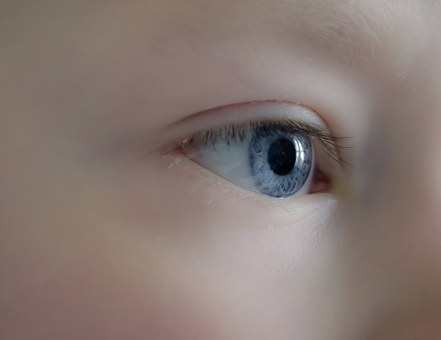The ocular pain may not only be the manifestation of a problem of ophthalmic origin, but be the result of problems in other body districts or be related to particular environmental situations.
 Often when a child complains of eye pain, he or she is examined by the family doctor and the first step is to try to obtain accurate clinical information (not always an easy task), starting with the classic pain-related questions. The way the child will respond (verbal or non-verbal) will clearly be related to his or her age. One must, however, consider that pain is one of the first words children learn, as part of their primary vocabulary, and they can use it to describe a variety of conditions.
Often when a child complains of eye pain, he or she is examined by the family doctor and the first step is to try to obtain accurate clinical information (not always an easy task), starting with the classic pain-related questions. The way the child will respond (verbal or non-verbal) will clearly be related to his or her age. One must, however, consider that pain is one of the first words children learn, as part of their primary vocabulary, and they can use it to describe a variety of conditions.
The ocular pain without obvious cause is unlikely to be related to a serious condition. In a sample of children between the ages of 2 and 6 years, some authors demonstrated that eye pain was functional in 73 out of 80 children (91%), who did not have red eyes or an obvious cause, according to these researchers, pain of a functional nature constitutes a diagnosis of exclusion.
In children under 8 years of agein which the visual function is not fully developed, the ocular pain could be a sign of an amblyopia (lazy eye) condition and in rare cases of a life-threatening visual pathology and/or systemic disease. Consequently, it is important to identify the origin of the pain.
To facilitate clinical diagnosis, a practical approach is to assess whether the eye is 'quiet' or 'red'. For "quiet eye' means a sore eye, but without the classic inflammatory eye signs, such as swelling of the eyelids, tearing, ocular secretion, redness, photophobia or changes in vision. For 'red eye', instead, one means the presence of classic signs of inflammation previously mentioned.
There are multiple causes of pain in a 'quiet eye' and in a 'red eye'. Some are shown in the table below, which correlates the differential diagnosis of clinical conditions that must be carefully evaluated by the specialist, the paediatric ophthalmologist.
Source:
Aguilera ZP, Chen PL. Eye Pain in Children. Pediatrics in Reviews, 2016.
| Differential diagnosis 'quiet eye' and 'red eye' | |
| Quiet eye' diagnosis | Red-eye' diagnosis |
| Eye fatigue due to refractive errors | Preseptic cellulite |
| Convergence failure | Dacryocystitis |
| Acute optic neuropathy | Blepharitis, internal and external hordeolum |
| Cranial neuralgia | Conjunctivitis (follicular, bacterial, viral, allergic or traumatic) |
| Intracranial processes (headaches with or without increased intracranial pressure) | Dry eye syndrome |
| Orbital tumour | Corneal abrasion, corneal ulceration, corneal foreign body |
| Facial processes (sinus infections) | Primary congenital glaucoma |
| Exclusion diagnosis: functional or idiopathic pain | Episcleritis, scleritis and uveitis associated with systemic conditions |
| Ocular contusion | |
| Adapted from Aguilera ZP et al, 2016 | |
Dr. Carmelo Chines
Direttore responsabile
